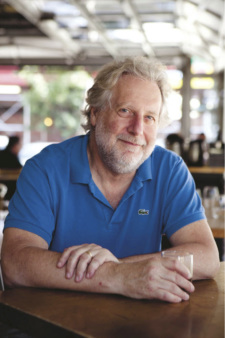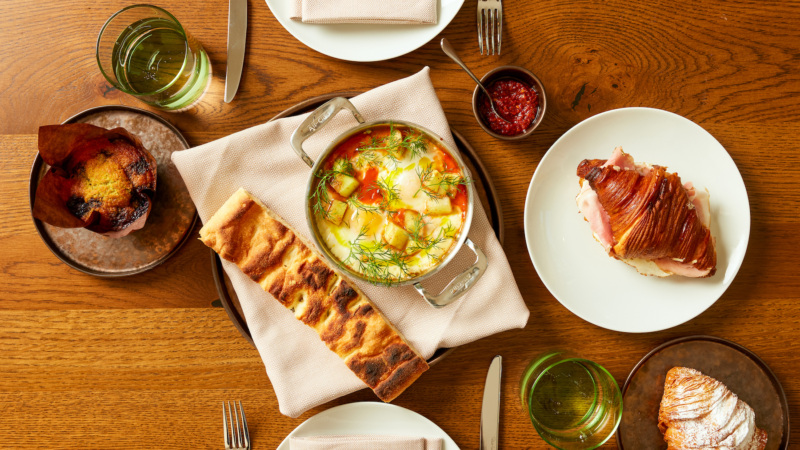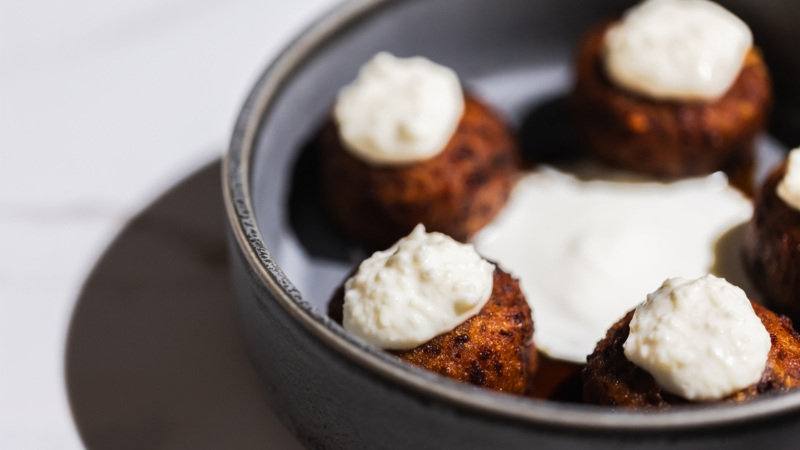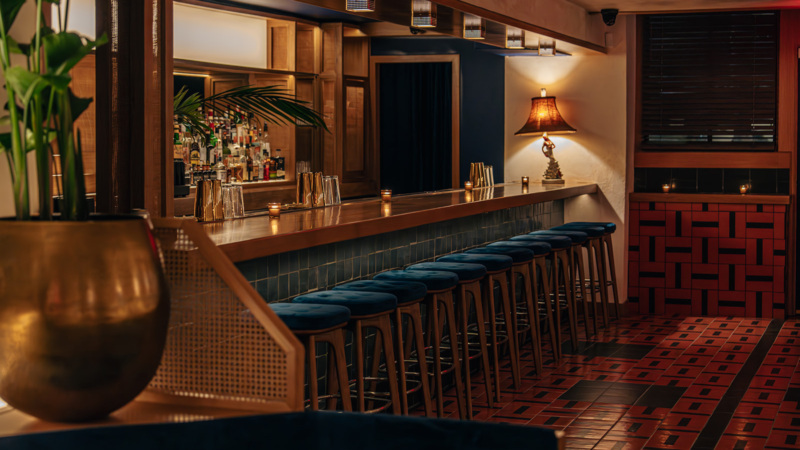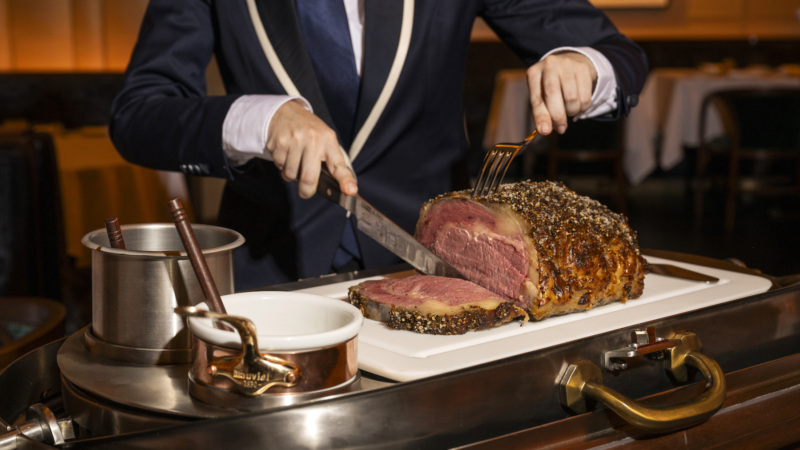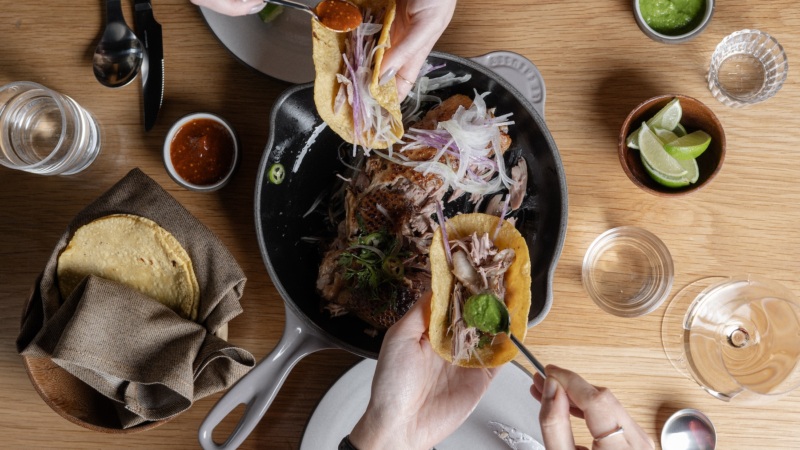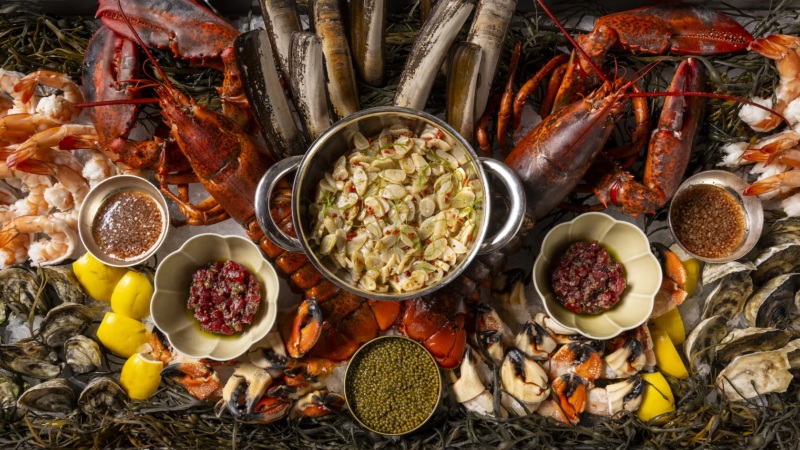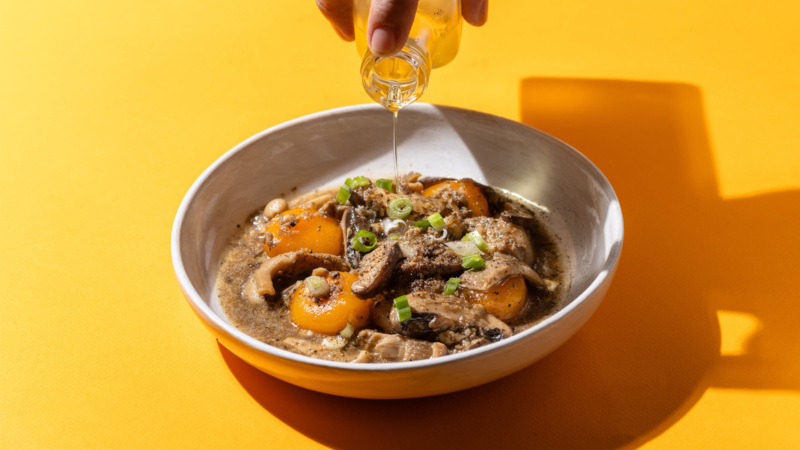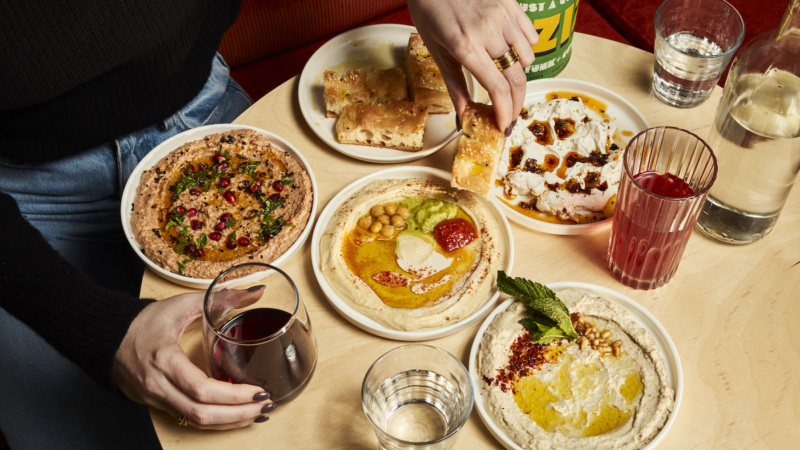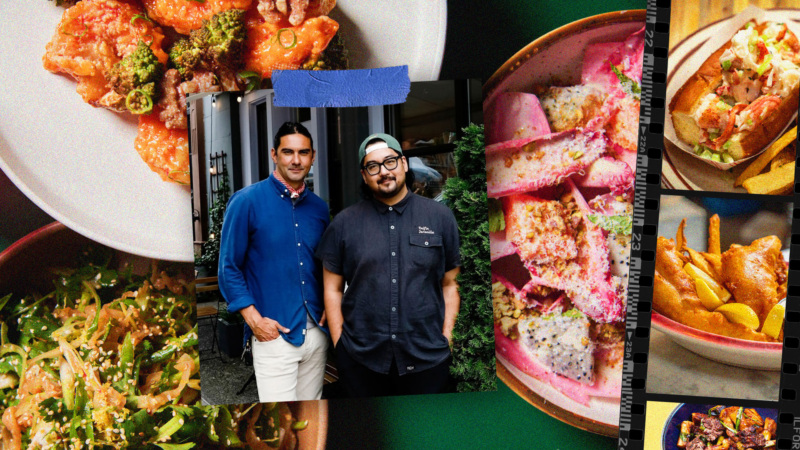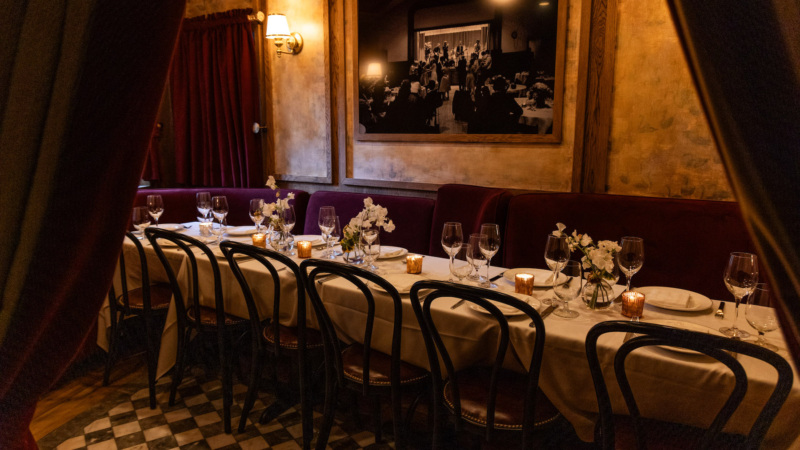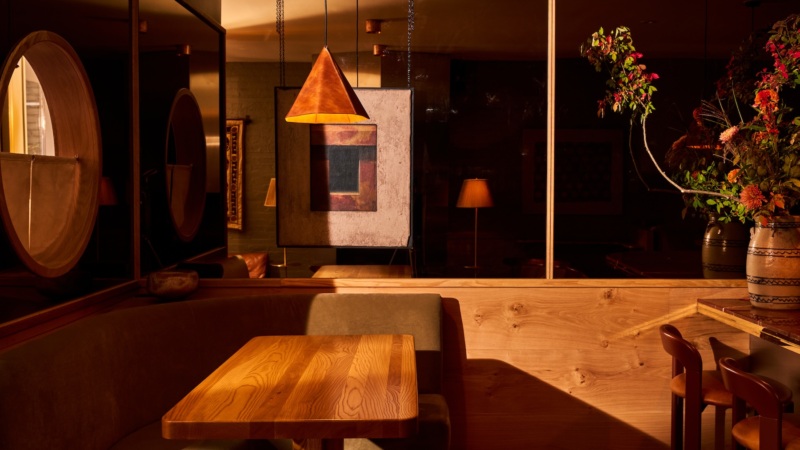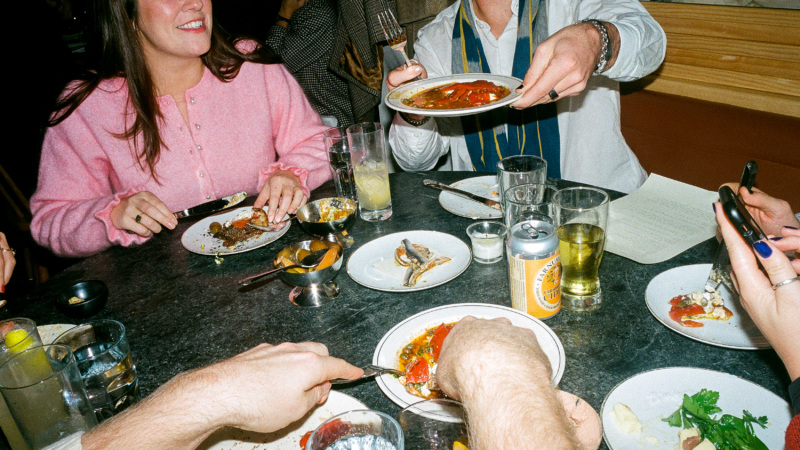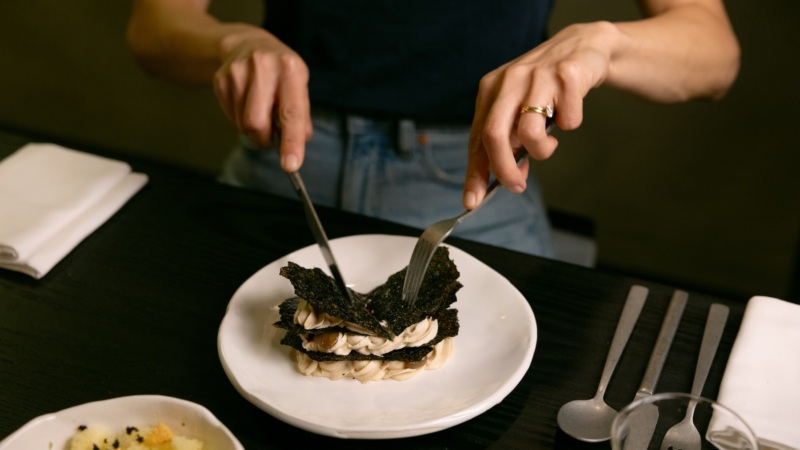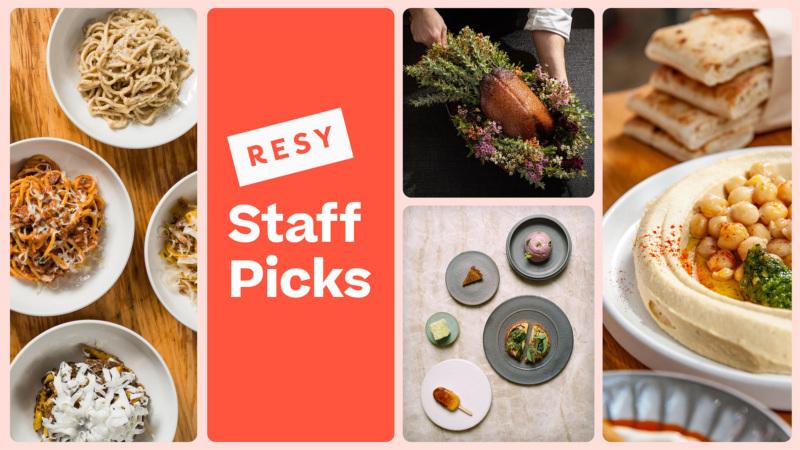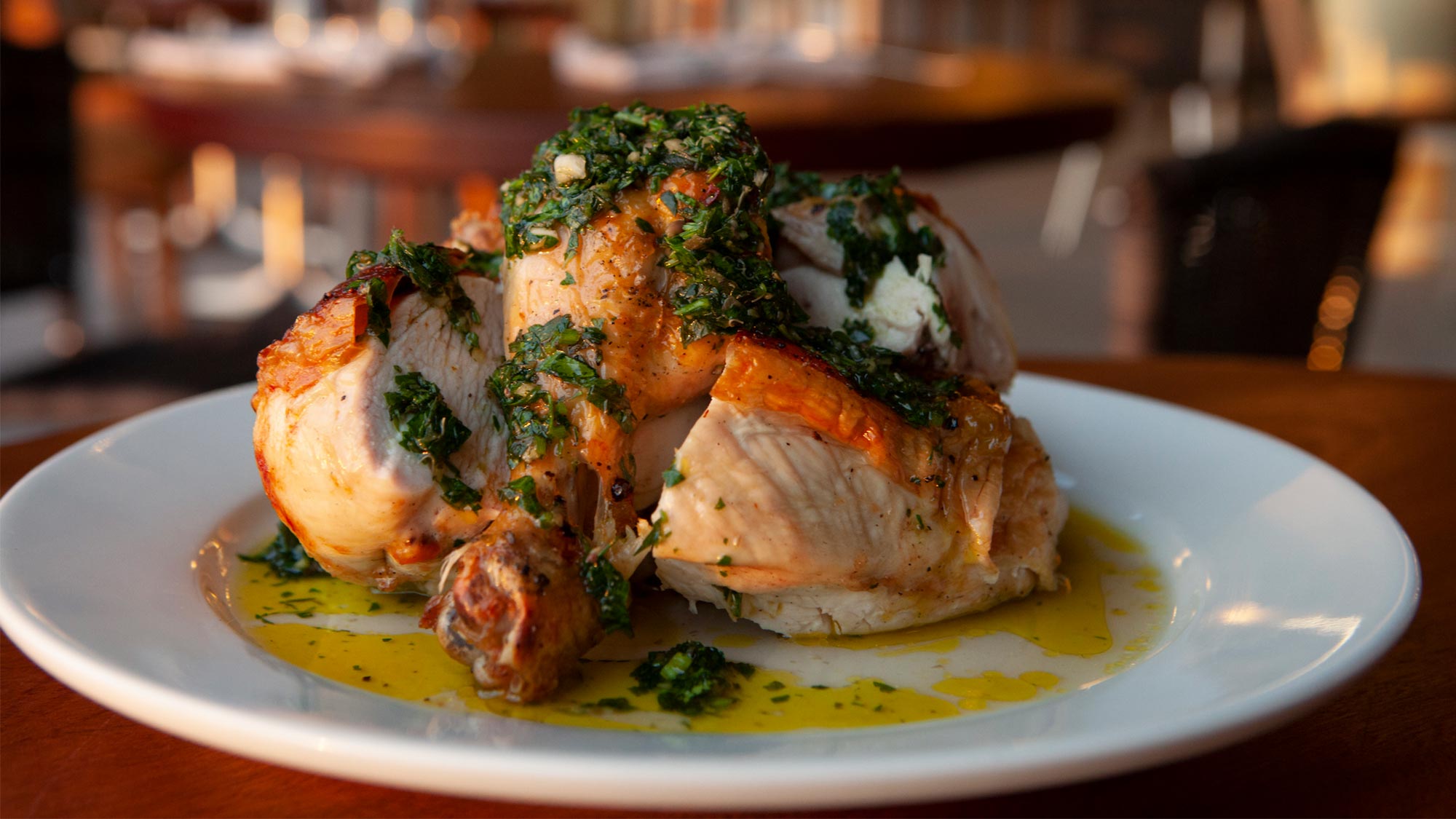
Barbuto Is Back. And Yes, So Is The Roast Chicken.
Three weeks: That’s exactly how long the new Barbuto was open before the pandemic shuttered its doors in March 2020.
Now, 18 months later, Barbuto is reopening, ready to serve platters upon platters of kale salad with pecorino and breadcrumbs. And, needless to say, dozens of its roast chickens with salsa verde each night. Barbuto’s is a signature version, one that catalyzed New York’s love of roast chicken, and spawned countless odes the world over.
Closing Barbuto after only three weeks of service was, as you can imagine, not what veteran chef and restaurateur Jonathan Waxman would have wanted for the second iteration of his beloved West Village restaurant.
For nearly 16 years, Barbuto charmed locals and tourists alike who sought out its simple, effortless fare and loved dining inside its space, warmed by an open fire and enclosed by glass garage doors that opened up in the spring and summer.
When the new Barbuto opened on Horatio Street, Waxman sought to deliver the same kind of ambience that he’d successfully pulled off on Washington Street (minus the garage doors). And now, after a year-and-a-half closure, he’s ready to welcome diners once more — with the restaurant set to reopen in mid-October. (On Oct. 7 and 8, reservations will be available exclusively to members of Resy’s Global Dining Access program.)
We spoke with Waxman about reopening Barbuto, and of course, his thoughts on that iconic roast chicken.
This interview has been lightly edited for clarity and length.
Barbuto was only open briefly before the pandemic shut everything down. What were those three weeks like?
Honestly, I don’t really remember that much about it. It’s kind of a blur. But it was wonderful to get open. The new space that we’re in is just terrific.. We were very lucky to have found a space that was kind of equal to the old space in many ways, but different.
And it has a better kitchen. It has a bigger bar. It has more bathrooms. It has a lot more creature comforts, I would say. And, you know, it was an improvement, in many ways, of the old Barbuto, if that makes sense? It just doesn’t have the garage doors that everybody [remembers].
I want to make sure that people understand they’re not getting garage doors in this space. They’re getting something equally good, if not better.
Why did you decide to wait to reopen until now?
It was extremely complicated, and it would take too long an explanation. But the fact was, we just weren’t ready.
What were things like for you during the pandemic?
Well, I have other restaurants. I have Adele’s in Nashville, obviously. And I have Jams. And I opened a new restaurant in Atlanta called Baffi. So other projects I was working on those, plus I had TV shows I was working on and, and I got to spend time with my family for the first time in years. We were all together. So I wasn’t alone. I wasn’t isolated. But it wasn’t business as usual for me, because Barbuto was closed.
Did the pandemic give you a new sort of perspective on restaurants, or did it reaffirm your thoughts about them?
This is a complicated question. I would say that COVID was a great leveler in many ways. It exposed the good things about our business, and also the bad things. And I think that it was a time for reflection by all restaurateurs to kind of say, “You know, how can we do this better? How can we improve what we’re doing?”
And I think in some ways, it was, you know, a good thing that we had to reassess. It was a terrible thing to have COVID be the catalyst of that reassessment, but I think it forced us all to kind of figure out how we can improve what we really love, and make it better. And, also to appreciate what we’d done in the past. That was a huge thing for me.
How is the reopening going?
The nice thing is that we already built the restaurant last year. So, it’s really a question of … it’s kind of like finding a beautiful, old vintage car in a in a garage, and you have to figure out how to get it restarted and make it beautiful again.
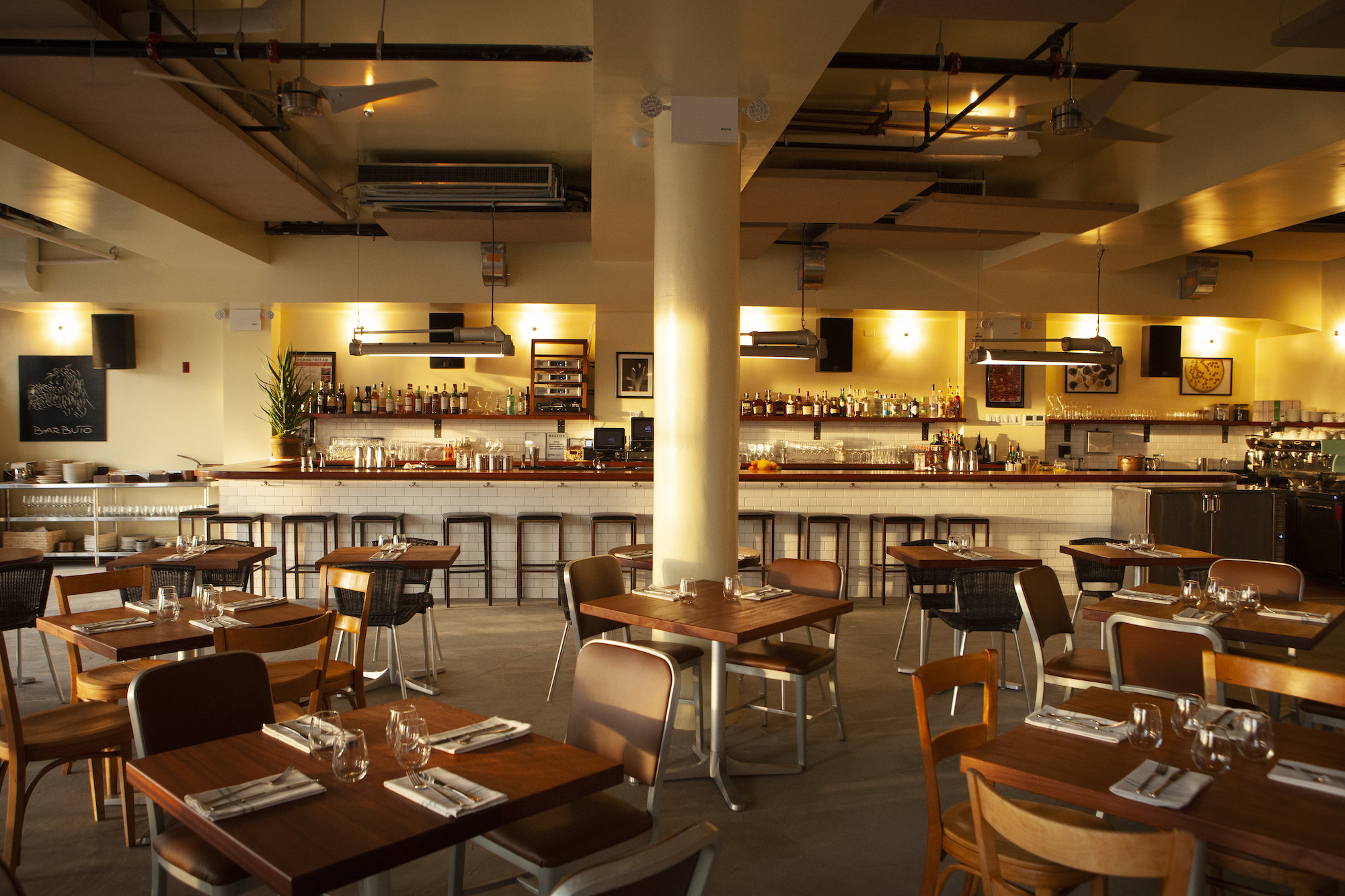
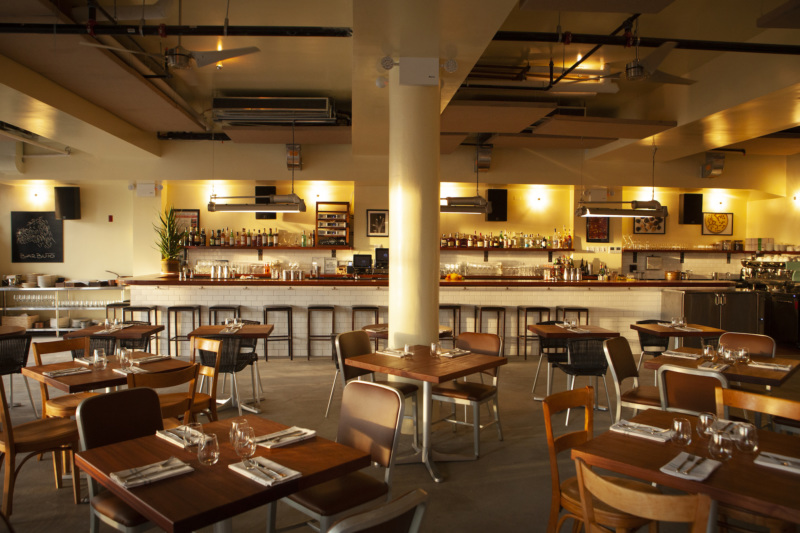
Does it still feel like how you remembered it?
No, it feels better. Because I have some perspective on it. And I think that I’m a year-and-a-half wiser. And I’m not going to make the same mistakes I made before — I’ll make some new mistakes, obviously. But in this year and a half, I was able to kind of concentrate on certain things about Barbuto, and how I wanted to make it better. And I had the time to do it. So, it’s kind of an interesting scenario; it’s kind of like a second chance in life.
What were some of those improvements you wanted to make?
I don’t know if I want to be open seven days a week anymore. We’re going to be open fewer days in the beginning, because the truth is, there’s no staff around. There’s no waiters, there’s no cooks. There’s just not enough people to staff seven days a week. So that is a physical phenomenon, or a sort of business issue, but also, I want to have as much fun for myself and my customers and my employees as possible.
So that that’s kind of the marching paradigm: How to be more equitable, more egalitarian, but also, how can I improve the experience? I mean, is this not what life’s all about? It’s about change and evolution and an exploration of the past so that your future gets better.
How has Barbuto evolved from when you first opened it?
When we first opened it, I thought we wouldn’t last a week. I didn’t have a manager. All I had was chef Lynn McNeely and myself, and one waiter, one busboy, and one bartender, and we didn’t think anybody would come. Truthfully, I thought it was a location that was off the beaten track that no one would find us.
So, over the years, you know, we’ve gone from that sort of humble beginning to a restaurant that people seem to love and adore and, you know, look forward to its reopening. It’s a pretty funny climb up the mountain.
Why is Barbuto so special to you, personally?
It’s a culmination of a long career of mistakes, successes, failures, and, you know, just moving on. And it started with a synthesis of all the things that I felt were important to a restaurant: To keep things simple. To have one knife, one fork, one spoon, one wine glass, one water glass. No tablecloths. Small menu, seasonal menu. And, you know, making sure that my staff were their own people; they were able to identify with Barbuto, but be able to be themselves within that that framework. There wasn’t a formula that they had to adhere to.
But we changed the menu every day; we evolved it every day. We change the wine list every day. We try to just make it like a restaurant that’s like eating in my house. That’s really what it was — when you’re dining at Jonathan Waxman’s house.
What do you think the appeal has been for faithful regulars?
They don’t define it in a specific way. They’ll talk about the kale salad, or the chicken, or they’ll talk about the JW Margarita. They’ll talk about the desserts, or they’ll talk about their favorite bartender or waiter, but it’s nothing so specific as it’s sort of this whole organic mass that equals Barbuto. You know, restaurants are kind of the sum of all these different little pieces.
It’s funny, one of my managers asked me what his real title is, and I said, “You’re the ambassador of Barbuto vibes.” It’s kind of goofy, and kind of comical, but it’s true at the same time. There is a Barbuto vibe that we try to get when you walk in the door. You put your cares away, and join the party.
Let’s talk about that famous roast chicken with salsa verde. How did that dish come about?
Well, I’ve been doing chickens to sell since I was a child; my grandparents had a chicken farm in Sonoma. So I was surrounded by chickens at a very early age. And when I was at Michael’s, 41 years ago, in Santa Monica, Calif., we had a chicken recipe that we put on, and I loved doing it. But I wanted to evolve it. In the old days, at Michael’s, I would debone the chicken and get rid of all the cartilage and sometimes I’d pull off the skin and I’d kind of make it into a fancy version of chicken.
When Barbuto opened, I thought, you know what, I’m going to just serve a half a chicken roasted. And I’m going to serve it Italian style with a salsa verde. And that’s it. It’s not going to have a garnish; it’s not going to have vegetables. It’s just going to be chicken with salsa verde, pure and simple, just to show off how great these chickens are. And people seem to gravitate toward that.
I didn’t know that it was going to be so insanely popular. It was kind of crazy, right? You know, there will probably be a silhouette of a chicken on my grave.
It’s kind of a crazy phenomenon. I always think that my chicken is like Chubby Checker, singing “The Twist.” You know, I’m sure he had a huge repertory, but everybody wanted to see him sing “The Twist.” And he didn’t mind. So that’s how I feel about my chicken.
Why do you think people love it so much?
It’s funny. I know chicken is ubiquitous on lots of menus. But I think people have a hard time cooking chicken correctly. It seems, on the surface, an easy dish to make. But it’s kind of like making an omelet or cooking pasta: They sound easy on paper, but in execution it’s very, very, very difficult. And because I’ve been doing it for such a long time — you know, I’ve cooked so many chickens in my life — every time I do it, I learned something new about how to do it. And that evolution, I think, keeps me a little ahead of the curve.
And the chickens themselves come from these Amish farms in Pennsylvania, and they’re the most pristine, healthy birds on the planet. I think chicken is sustainable, so I like that part of the equation. And it speaks to my California roots to prepare a chicken that’s just salt and pepper, cooked simply, with a salsa verde.
Have you used the same purveyors for the chicken all this time?
I have, actually. We haven’t deviated. You know, it’s funny, about 10 years ago, I was thinking about making a change. We had had tastings for two days and tasted maybe 50 different chickens and, of course, the Barbuto chicken is the litmus test, right? So, I had people who weren’t cooks — they were either customers or my managers or my family — taste these chickens. And, it’s funny, everybody preferred the original Barbuto chicken. It was kind of crazy. Some of these chickens were just beautiful. They were great. It was a subtle difference. But it was amazing to see who liked what.
The Barbuto chicken has inspired a lot of other roast chicken dishes. What do you think of that influence?
It’s funny. I always say, “Can I get a quarter for stealing my recipe?”
But honestly, it’s very flattering to see people emulate Barbuto’s chicken. It makes you feel good. They thought enough of what I serve to kind of try to duplicate it or do it in their own style, and I think that’s special.
Has any version really impressed you?
When I go out to eat, I don’t actually order my own chicken, or other chicken. I see enough of them in Barbuto. I don’t think I need to see another one outside.
What makes restaurant roast chicken so special, as opposed to what people make at home or, God forbid, a rotisserie chicken from the grocery store?
Well, number one is that restaurants have access to better products. So, the sourcing is better. Number two is, people seem to be shy about spending a lot of money, but my chickens cost a lot of money — they’re expensive, they’re not your garden variety chicken in a plastic bag that you find at a supermarket.
The other part of the equation is that it is very difficult to cook chicken as well. That’s why chefs do it better than home cooks; they do it way more often. They cook 30 or 40 chickens a night, so they get good at it. If you do it 12 times a year, it’s difficult to get it perfect. If you follow recipes, that makes sense, but if you were to cook chicken for your family every night for 365 days, you’d be pretty good at it. But you still would not be as good as someone who, on average, cooks 200 to 300 chickens a week.
I think it’s a little bit like tennis. You could be a pretty good amateur tennis player. and play two or three days a week and put a lot of time in, and then you go to the U.S. Open, and you go, “Oh my God, they’re on a different planet.”
Why pair the chicken with salsa verde?
Before I used to do a sort of brown butter with tarragon sauce, and I wanted to be more Italian and a little bit lighter, so I came up with an olive-oil based sauce thought that was made with herbs, and then the salsa verde just made sense.
For home cooks who want to attempt making the Barbuto chicken, what advice would you give?
Well, number one, they could buy the Barbuto cookbook. And the recipe is really good in that book. I’m really proud of the recipe. I think it will serve them well.
I saw a version of the recipe that says you have to baste the chicken every eight minutes. Is that absolutely essential?
It’s not essential, but it really makes things different. And it’s not that hard to do, you know?
What can diners returning to Barbuto expect?
Well, that’s a little bit of a surprise. I think things will be a little different, but very much the same as well. I think people will not walk into a redesigned restaurant. They’re not walking into a place with a redesigned menu. But there are going to be some enhancements, shall we say, that hopefully will make the experience even better.
Deanna Ting is a Resy staff writer. Follow her on Instagram and Twitter. Follow @Resy, too


